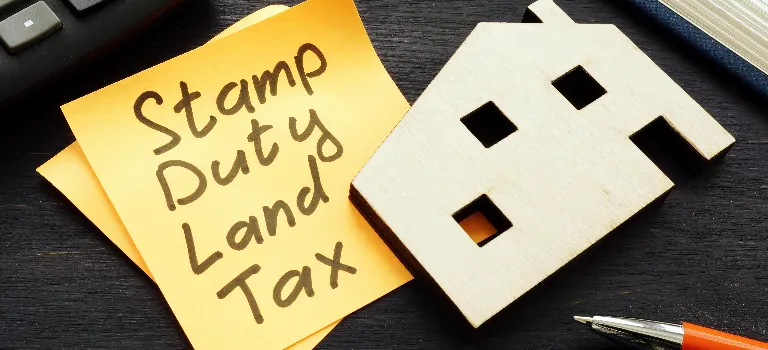With the temporary relief for home purchases coming to an end soon, many are asking when is Stamp Duty changing. Stamp Duty Land Tax (SDLT) rates in the UK will change for all property completions starting 1st April 2025. However, these changes aren’t new or unprecedented. In fact, they are just a continuation of the previous tax regime before the last government temporarily increased SDLT thresholds in 2022. While these changes will stretch the finances of thousands of homebuyers, first-time buyers will be the ones most affected.

Before we look at the changes to SDLT and its impact on different buyer groups, we must know how different property buyers are classified. The SDLT amount payable by a property buyer depends on the following factors
- Whether a UK or non-UK resident
- Buying a property as an individual or a business
- Whether a first-time buyer or someone replacing their primary residence
- Someone purchasing an additional property
What are the current SDLT rates that will soon expire?
Current SDLT rates are calculated according to the increase in thresholds announced by the Conservatives in their Autumn Budget of 2022, wherein the nil rate (0% tax applicable) threshold was increased for residential properties from £125,000 to £250,000. Similarly, the nil rate for first-time buyers was increased from £300,000 to £425,000, with a reduced rate of 5%, termed ‘First-Time Buyers Relief’, applicable for properties worth up to £625,000. Previously, this relief was limited to properties valued between £300,001 to £500,000.
For primary residence buyers
The table below explains the current SDLT rate (based on property value) and the revised rate applicable from 1st April for primary residences.
| Current rate |
Revised rate |
| Up to £250,000 – 0% |
Up to £125,000 – 0% |
| £250,001 to £925,000 – 5% |
£125,001 to £250,000 – 2% |
| £925,001 to £1,500,000 – 10% |
£250,001 to £925,000 – 5% |
| Over £1,500,000 – 12% |
£925,001 to £1,500,000 – 10 |
|
Over £1,500,000 – 12% |
While anyone replacing their primary residence until March does not have to pay any tax for properties valued up to £250,000, a 2% rate will be chargeable for all buyers buying a home between £125,001 and £250,000. Let’s say you are changing address to a property worth £225,000; you will pay 2% tax on the amount spent over £125,000, which is 2% of £100,000 = £2,000.
For first-time homebuyers
The table below explains the current SDLT rate (based on property value) and the revised rate applicable from 1st April for first-time homebuyers.
| Current rate |
Revised rate |
| Up to £425,000 – 0% |
Up to £300,000 – 0% |
| £425,001 to £625,000 – 5% |
£300,001 to £500,000 – 5% |
With the SDLT threshold returning to previous levels, anyone buying their first home valued between £300,000 and £500,000 will have to pay a direct 5% tax on the amount over £300,000. For example, if you are a first-time buyer acquiring a property worth £425,000 after 1st April, you will have to pay HMRC 5% of £125,000 (£425,000 – £300,000) = £6,250 which is completely waived if your sale is completed before 1st April.
For second-home buyers and company purchases
The table below explains the current SDLT rate (based on property value) and the revised rate applicable from 1st April for buyers of second or multiple homes and to companies who usually make up the landlords and investor segment.
| Current rate |
Revised rate |
| Up to £250,000 – 5% |
Up to £125,000 – 5% |
| £250,001 to £925,000 – 10% |
£125,001 to £250,000 – 7% |
| £925,001 to £1,500,000 – 15% |
£250,001 to £925,000 – 10% |
| Over £1,500,000 – 17% |
£925,001 to £1,500,000 – 15% |
|
Over £1,500,000 – 17% |
With the minimum 5% rate threshold dropping to £125,000 from 1st April, anyone buying their second or an additional property will have to pay a revised rate of 7% for properties priced between £125,000 and £250,000. For example, if you are a property investor buying an extra asset worth £250,000, you will have to pay HMRC 7% of £250,000 = £17,500 instead of the current 5% = £12,500, which is £5,000 more.
While the above rates and revisions to each of them apply to UK residents, non-UK residents, such as overseas investors, will continue to pay the 2% surcharge charged across all tax brackets. Use our free and updated stamp duty calculator to get a more specific estimate of the SDLT payable on your London property.
International offices















